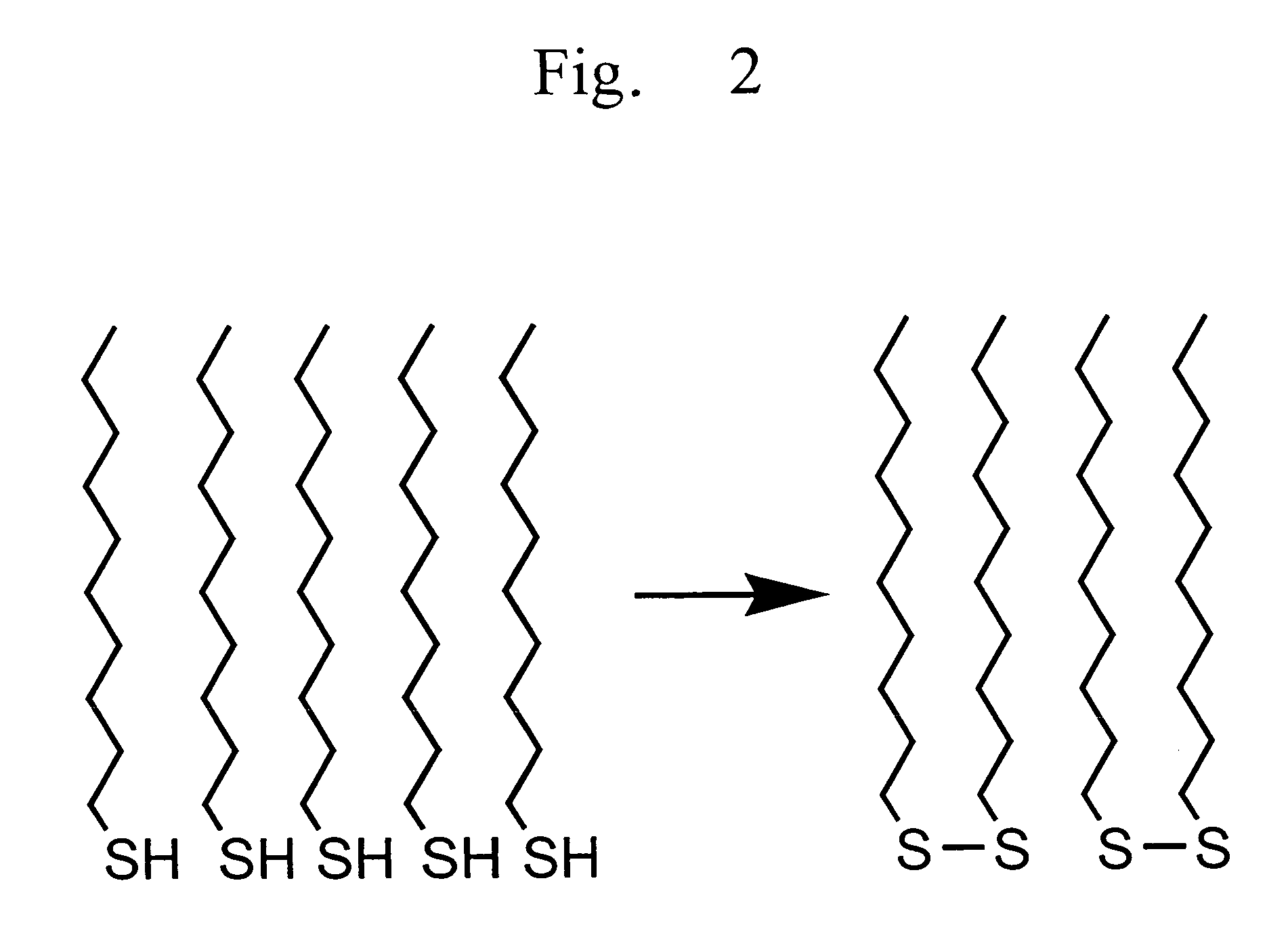Nanofilm and membrane compositions
a technology of nanofilms and membranes, applied in the field of nanofilms and membrane compositions, can solve the problems of unmatched building block capabilities of conventional materials, undefined porosity, and inability to define or control porosity by conventional methods, and achieve the effects of high permeability, low permeability, and high permeability
- Summary
- Abstract
- Description
- Claims
- Application Information
AI Technical Summary
Benefits of technology
Problems solved by technology
Method used
Image
Examples
example 1
Derivatization of Silicon Substrates with (3-aminopropyl)triethoxysilane (APTES)
[0268]SiO2 substrates were first sonicated in a piranha solution (3:1 ratio of H2SO4:30% H2O2) for 15 minutes. This was followed by a 15 min sonication in Milli-Q water (>18 MΩ-cm). The derivatization step was done in a glove bag under a N2 atmosphere. 0.05 mL APTES and 0.05 mL pyridine were added to 9 mL of toluene. Immediately following mixing, the freshly cleaned SiO2 substrates were immersed in the APTES solution for 10 min. Substrates were washed with copious amounts of toluene and then dried with N2. Deposited APTES films showed a range of thickness values from 0.8 to 1.3 nm.
example 2
[0269]Amphiphilic modules Hexamer 1a were dissolved in HPLC-grade chloroform at a concentration of approximately 1 mg / ml. The chloroform solution was applied to a water (Millipore Milli-Q) surface in an L-B trough (KSV, Helsinki). The chloroform was allowed to evaporate, leaving the amphiphilic modules on the surface of the water with their hydrophilic groups immersed in the water and their lipophilic groups in the air. The temperature in the system was controlled (approximately ±0.2° C.). The barriers of the L-B trough were slowly compressed (1-10 mm / min). The surface pressure was monitored using the Wilhelmy procedure during film compression. The shape of the isotherm confirmed that the module formed a Langmuir film on the surface of the water.
example 3
Hexamer 1dh with DEM (Langmuir-Blodgett Deposition)
[0270]The scheme for this preparation is illustrated in FIG. 1. 25 μl of a 1 mg / ml solution of Hexamer 1dh in chloroform were spread on a 2 mg / ml diethyl malonimidate (DEM) in water subphase (pH 8.8, T=22° C.). After waiting for 19 minutes to allow for spreading solvent evaporation, the monolayer was compressed and held at 5 mN / m. The subphase was then heated to 40° C. and held for approximately 60 minutes. A rigidified solid nanofilm was formed on the surface of the subphase, which appeared uniform and homogeneous in a Brewster Angle microscope image. When touched with a probe, the film was cracked, as shown by the Brewster Angle microscope image obtained for the film directly on the surface of the subphase, illustrated in FIG. 6A. This indicates that the nanofilm was highly cross-linked. Mass spectral analysis of the rigid nanofilm could not be performed because the solid nanofilm clogged the input of the instrument.
[0271]Another ...
PUM
| Property | Measurement | Unit |
|---|---|---|
| Time | aaaaa | aaaaa |
| Thickness | aaaaa | aaaaa |
| Thickness | aaaaa | aaaaa |
Abstract
Description
Claims
Application Information
 Login to View More
Login to View More - R&D
- Intellectual Property
- Life Sciences
- Materials
- Tech Scout
- Unparalleled Data Quality
- Higher Quality Content
- 60% Fewer Hallucinations
Browse by: Latest US Patents, China's latest patents, Technical Efficacy Thesaurus, Application Domain, Technology Topic, Popular Technical Reports.
© 2025 PatSnap. All rights reserved.Legal|Privacy policy|Modern Slavery Act Transparency Statement|Sitemap|About US| Contact US: help@patsnap.com



